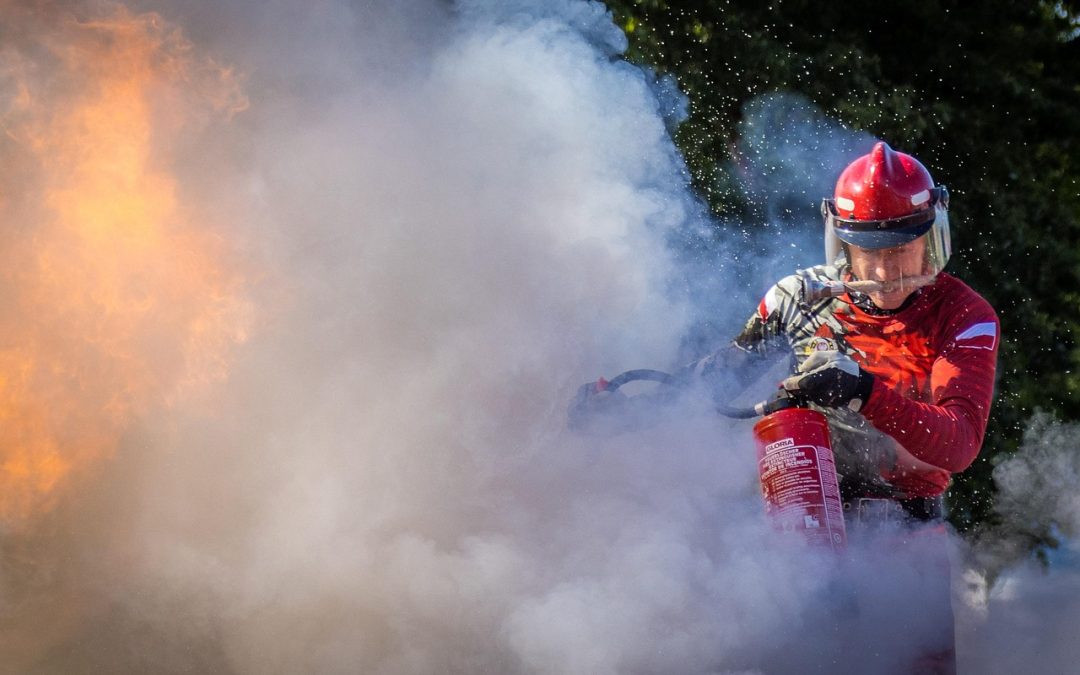“The urgent is rarely important, and the important is rarely urgent.” – Dwight D. Eisenhower
If you’ve ever ended your week exhausted, wondering why your to-do list looks suspiciously the same as it did on Monday, you may already know this truth: you’re running a fire station, not a business.
It’s the curse of firefighting. And it’s more common than most leaders care to admit.
Firefighting feels like progress. After all, you’re solving problems, moving fast, keeping the ship afloat. But here’s the reality: firefighting is the most expensive and exhausting way to run an organisation. It doesn’t just cost you time and energy, it quietly bleeds your revenue, erodes employee morale, and puts a cap on your growth.
In my 20+ years working with organisations across continents, I’ve seen firefighting cultures up close, from fast-growing SaaS firms to nonprofits struggling with donor engagement. And I’ve seen how costly it gets when businesses mistake “busy” for “productive.”
So let’s break it down: what firefighting really looks like, why leaders get trapped in it, and how to build a business that doesn’t just survive fires but prevents them.
What Firefighting Looks Like in Business
No leader wakes up thinking: Let’s run this company on chaos. But over time, small compromises, shortcuts, and “temporary fixes” pile up. Eventually, they define how the business works.
Here’s what firefighting looks like in practice:
- Patchwork Processes: A client complains, and instead of redesigning the workflow, someone bolts on a quick workaround. It works “for now” and then becomes permanent.
- Tool Overload: The CRM is messy – add a new plug-in. Sales and operations aren’t aligned – buy another dashboard. Layer upon layer of tools, none speaking the same language.
- Reactive Leadership: Leaders spend their days solving yesterday’s problems instead of designing tomorrow’s solutions. They’re stuck on the hamster wheel of “urgent.”
- Team Heroics Over Systems: The business survives not because of its processes, but because a handful of employees keep saving the day.
“If you don’t have time to do it right, when will you have time to do it over?” – John Wooden
At first, this approach feels efficient. After all, problems get solved. But over months and years, the cracks widen, until what looked like control reveals itself as chaos.
The Real Costs of Firefighting
Firefighting doesn’t just keep you busy. It costs you in ways that are harder to see, but far more damaging.
- Lost Revenue: Customers don’t always tell you why they leave. They just drift away. And often, the reason is the cumulative effect of firefighting: missed handoffs, broken promises, inconsistent service. They don’t see “firefighting.” They see disorganisation.
- Employee Burnout :Imagine solving the same problem every week, knowing full well it will pop up again. That’s what firefighting does to employees. It kills morale, drives disengagement, and increases turnover.
- Scaling Failure: Here’s the harsh truth: you can’t scale firefighting. What works with 10 employees becomes a disaster at 50. Quick fixes that save time in the moment multiply bottlenecks as the business grows.
- Erosion of Trust: Both customers and staff eventually stop believing in promises. If the CRM never works, if onboarding is always painful, if deadlines are always slipping, no one trusts the system anymore.
Case in Point: When Firefighting Becomes a Growth Killer
A few years ago, I worked with a fast-growing background screening firm in Asia-Pacific. On paper, they were thriving: strong demand, an expanding customer base, ambitious growth targets.
But behind the scenes, onboarding was a mess. Every department had created its own “temporary” fixes over the years. Some teams tracked progress in spreadsheets. Others built their own mini systems. Everyone thought their way was best.
The result?
- Clients waited weeks longer than promised.
- Revenue recognition slowed to a crawl.
- Teams were exhausted from solving the same problems repeatedly.
They weren’t running a growth business. They were running a fire brigade.
The fix wasn’t complicated. We conducted a CRM audit, mapped the customer journey end-to-end, and created one unified onboarding framework. Within months, onboarding times dropped, churn decreased, and growth jumped back to 30% year-on-year.
That’s the thing about firefighting: the fires aren’t always huge. But the smoke chokes growth all the same.
Why Leaders Struggle to Break the Cycle
Firefighting is seductive. That’s why it’s so hard to escape.
- It Feels Heroic: Leaders love being the problem-solver. It creates a sense of indispensability.
- It Feels Urgent: Prevention feels optional when you’re drowning in today’s crisis.
- It Gets Rewarded: Employees who save the day are celebrated. Those who quietly build prevention systems go unnoticed.
- It Feels Safer: Fixing a fire feels concrete. Redesigning a process feels abstract, until the cost becomes undeniable.
The truth? Leaders often confuse motion with momentum. Firefighting keeps you moving. But not always forward.
Breaking Free: The Fireproof Playbook
At Vani Malik Consulting, I work with organisations to shift from firefighting to fireproofing. Here’s how:
- Diagnose the Fire starters: Most recurring problems trace back to broken processes or unclear accountability. We map them, name them, and make them visible.
- Design Root-Cause Solutions: Stop patching symptoms. Fix the foundation. Whether it’s CRM alignment, process redesign, or team structure, we build systems that last.
- Create Breathing Space: Leaders need time to think strategically. That means creating operational clarity so the day-to-day doesn’t consume every waking hour.
- Reward Prevention, Not Heroics: We build accountability frameworks where prevention is celebrated as much as crisis-solving.
- Simplify Before Scaling: No new tool, hire, or initiative gets added until the existing systems are working cleanly.
The Power of Clarity
“Clarity is the ultimate competitive advantage.”
When teams and systems are aligned, firefighting fades into the background. Instead of solving the same issues repeatedly, leaders unlock space for innovation, strategy, and growth.
I’ve seen this across industries – nonprofits, SaaS firms, global enterprises. The pattern is always the same: the moment an organisation trades firefighting for clarity, results follow.
- Customer retention improves.
- Employee engagement rises.
- Growth becomes scalable.
Final Thought
Firefighting may feel inevitable, but it isn’t. It’s a choice, one many businesses make without realising it.
The alternative is clarity: systems that work, teams that align, and processes that prevent problems instead of endlessly solving them.
At Vani Malik Consulting, we don’t just help you put out fires. We help you fireproof your business, so your energy goes into growth, not crisis management.
Because true leadership isn’t about being the hero with the fire hose. It’s about building a business where fires rarely start.



